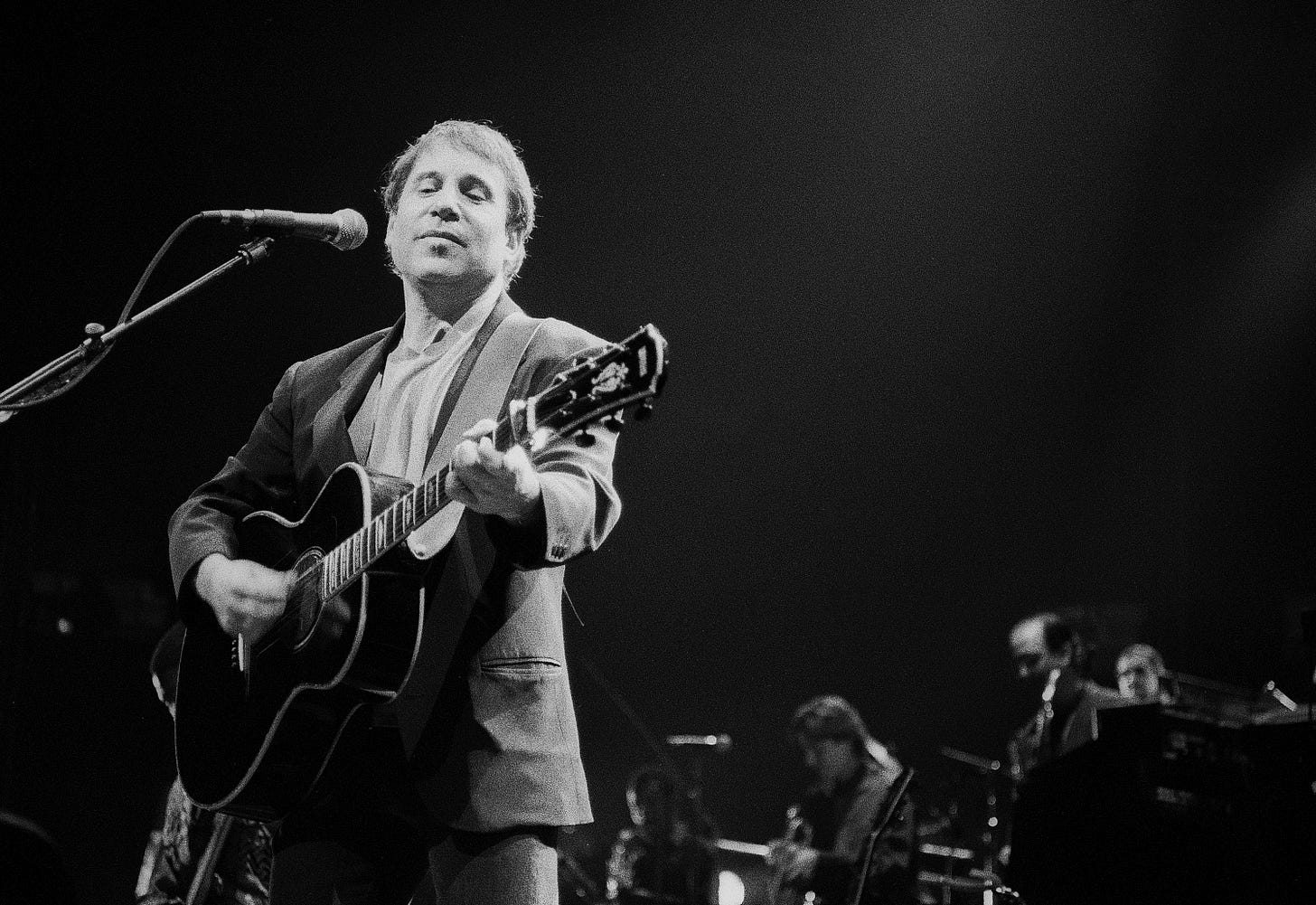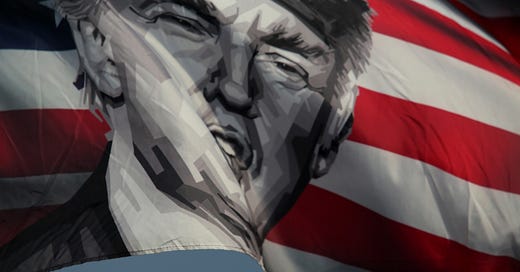
Paul Simon, American Scribe
The singer-songwriter from Queens—who turns 80 next week—took in everything and chronicled his society.

It was early morning in a church auditorium somewhere in Minneapolis, 2013. I was there representing a college club at an annual conference, and due to catch a bus back to the airport at 4 a.m. Some of the other attendees, probably also staying awake because of their rides, were playing on a guitar and singing. Paul Simon’s “Me and Julio Down by the Schoolyard,” with its cryptic reference to a “radical priest,” was the perfect song for a slap-happy bunch of college students to sing in a church auditorium at 3 a.m. It might even have been a Wednesday morning.
A few months ago I was at my hairdresser’s. She’s a lovely woman from Vietnam whose family owns and staffs her barbershop. “The Sound of Silence” came on the radio, and she hummed along to it as though it were deeply familiar to her. More than a half-century after its release, this Simon & Garfunkel tune is a recognizable piece, and perhaps a cherished piece, of American culture for this immigrant woman.
Born in Newark, New Jersey on October 13, 1941 and growing up in Queens, Paul Simon was not the first in his family to be a musician; his father was a bass player and a bandleader for radio and TV. (In an interview earlier this year, Simon hinted at intriguingly complicated feelings the father had for the son’s music and career.) Unlike many children of working-class parents, and for that matter unlike many pop musicians, Simon completed high school and even college—the year before the release of the first Simon & Garfunkel album. But Simon’s parents were not exactly working-class. His mother was a schoolteacher, and his father, in addition to his musical activity, taught college classes. Jewish immigrants, they had come to America from Hungary in the early 1930s, at a time when Europe was turning calamitously anti-Semitic.
Of course, the questions of Jewish assimilation and American anti-Semitism remained, regardless of class. While the name “Paul Simon” reads as plain old “American” today, well into the 1960s it was recognized as distinctively Jewish. Simon and his high school classmate Art Garfunkel, both Jewish, performed under “Americanized” names before their big break: Their duo was nearly called “Tom and Jerry,” and Simon himself was skeptical that their real names would sell albums. Thankfully, they did.
Simon’s biography, then, holds within a period of postwar American culture, if not a particularly proud one. But it’s his music that captures so many bits and pieces of the American experience.
Take “The Boxer,” released in 1969, which describes a liminal New York City in almost mythical language. Consider that Paul Simon was born only 30 years after the Triangle Shirtwaist Factory fire, and that “The Boxer” was released only 24 years before the election of Rudy Giuliani. The Big Apple had already begun to enter the long urban slump, yet its industrial Ellis Island period had barely ended. Simon’s semi-autobiographical lyrics—describing a poor boy leaving home for the city, arriving by train, and, denied even “workman’s wages,” turning to informal boxing—describe a vanished but still very close entrepreneurial, hardscrabble New York. As with much of Simon’s work, something that came together for him out of a variety of idiosyncratic sources and influences somehow also doubled as a sort of timeless, folk-infused cultural documentary.
Then, of course, there’s “The Sound of Silence,” which reached the top of the charts in 1966 and the next year was cemented in the pop-culture consciousness with the soundtrack of The Graduate. Simon’s granular storytelling ability shines in this song, with his vivid juxtaposition of a softly lit cobblestone street with a piercing neon sign. (Paul Simon: accidental urbanist!) But his true achievement here was capturing the angst of the Sixties in an apolitical way—in fact, Simon once worried that the duo were not perceived as hippies—with no obvious references and in language that still resonates. A neon sign flashing out a prophetic warning. It’s as idiosyncratic and uniquely American as the Cotton Patch Version of the Bible: tied to a very narrow moment in time but also timeless.
In “America,” Simon’s wistful 1968 road-trip song about two lost, adventuring lovers, he strings together disjointed references to Saginaw and cigarettes and Greyhounds and hitchhiking and somehow builds something that feels at once like an ancient story and a mid-’60s lament.
One senses that the prolific Simon’s 1960s songs came together not through a writing process per se, but rather by being constantly observant, taking in everything and impressionistically, inadvertently chronicling his society. The “radical priest” of “Me and Julio” is thought to be a reference to a 1971 Time magazine cover featuring Daniel Berrigan, a controversial Jesuit who once declared that “a decent society should no more have an abortion clinic than the Pentagon.” Another Simon earworm, “Mother and Child Reunion,” takes its name from a chicken-and-egg dish Simon saw on a menu in Chinatown; the song was one of white America’s first introductions to reggae.
And then there’s his comeback story. By the mid-1980s, deep in a creative slump and recovering from the wreck after just one year of his marriage to Star Wars star Carrie Fisher, Simon began work on Graceland, without the security, or strictures, of his record label’s interest. He challenged both the South African apartheid regime and the American liberals who felt a boycott of South Africa must be absolute and total, and in doing so joined with black South African musicians to create one of the most acclaimed albums ever recorded, toured with them, and introduced their music to most Americans for the first time. While Simon would go on to release seven more solo studio albums, and remains active today, Graceland is a capstone of sorts on his long career.
Bob Dylan may have drawn inspiration from the “old, weird America,” Elvis Presley may have been America’s first rock star, Bruce Springsteen may have uniquely conveyed the desperation of the Jersey Shore as the postwar boom fell apart, and CCR may have captured the Bayou as well as a few SoCal guys possibly could. But Paul Simon painted the New York City of the industrial era. He gave voice to the subtler anxieties and joys of the baby boomers coming into their own. He toured with black South African musicians. He sang a paean to Kodachrome film. He worked a Chinese menu item and an interest in reggae into a hit single. Perhaps no artist took in and captured a longer and broader swath of American culture and history, in all its color and idiosyncrasy.















